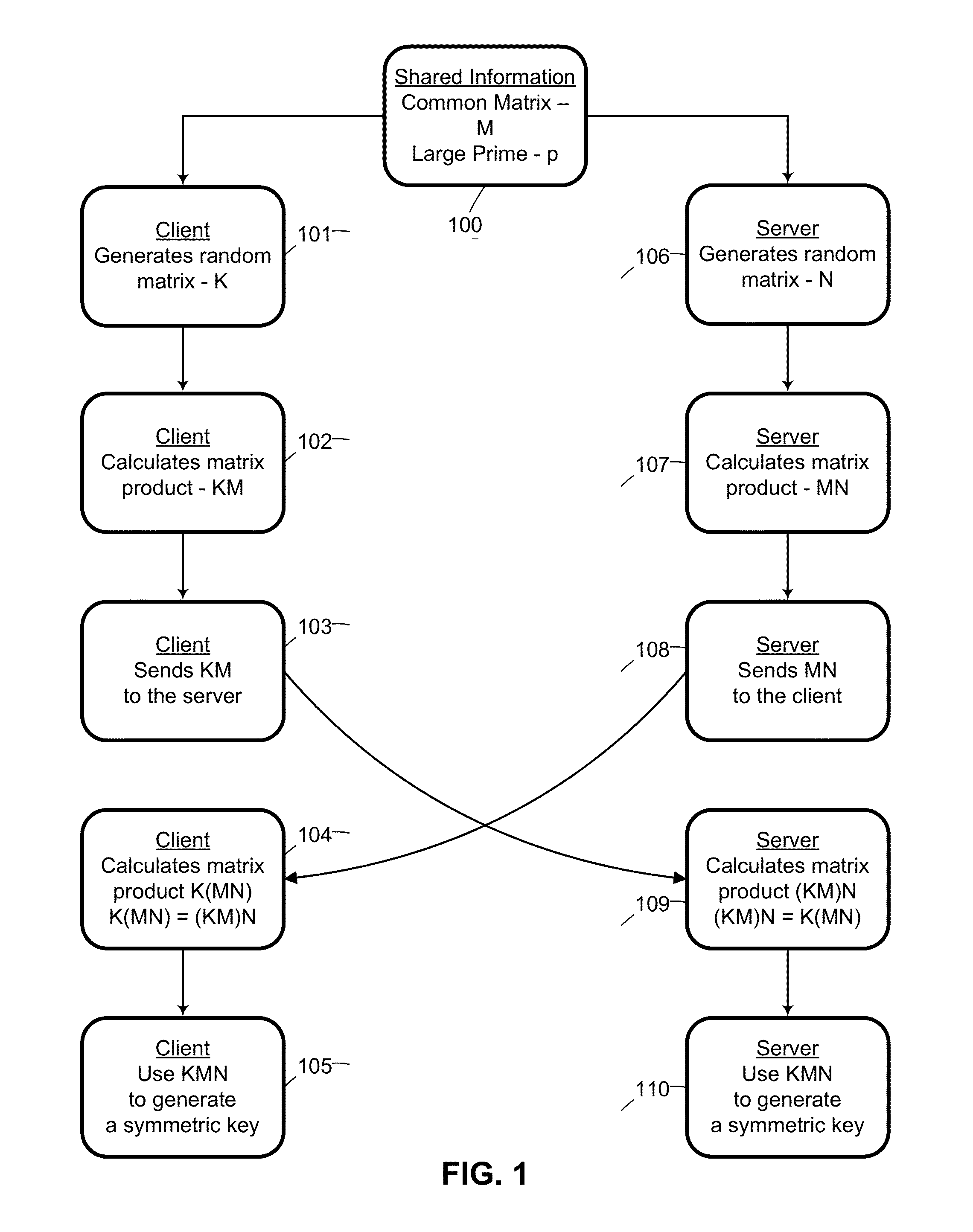System and method for mutually authenticated cryptographic key exchange using matrices
a cryptographic key and mutual authentication technology, applied in the field of cryptographic systems, can solve the problems of easy calculation, difficult calculation in the opposite direction, and vulnerable to man-in-the-middle attacks
- Summary
- Abstract
- Description
- Claims
- Application Information
AI Technical Summary
Benefits of technology
Problems solved by technology
Method used
Image
Examples
Embodiment Construction
[0046]The first part of the invention herein disclosed is provide a means whereby two parties can establish a cryptographic key without permitting any eavesdropper to obtain or easily brute force those keys.
Key Exchange Protocol
[0047]Referencing FIG. 1, two parties select a common key by:[0048](100) The two parties agree upon a common matrix M and a large prime p to be used with the modulus function.[0049](101) The client randomly generates a matrix K.[0050](106) The server randomly generates a matrix N.[0051](102) The client left multiplies M with K.[0052](103) The client sends the product KM mod p to the server.[0053](107) The server right multiplies M with N.[0054](108) The server sends the product MN mod p to the client.[0055](104) The client left multiplies the received MN mod p value by K to create the product (K(MN mod p)) mod p.[0056](109) The server right multiplies the received KM mod p value by N to create product ((KM mod p)N) mod p.[0057](105) The client generates a sym...
PUM
 Login to View More
Login to View More Abstract
Description
Claims
Application Information
 Login to View More
Login to View More - R&D
- Intellectual Property
- Life Sciences
- Materials
- Tech Scout
- Unparalleled Data Quality
- Higher Quality Content
- 60% Fewer Hallucinations
Browse by: Latest US Patents, China's latest patents, Technical Efficacy Thesaurus, Application Domain, Technology Topic, Popular Technical Reports.
© 2025 PatSnap. All rights reserved.Legal|Privacy policy|Modern Slavery Act Transparency Statement|Sitemap|About US| Contact US: help@patsnap.com



